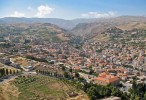 PBI operates several courts in the region, including at Jumeirah Beach Hotel in Dubai (photo: Ineke Zondag)
PBI operates several courts in the region, including at Jumeirah Beach Hotel in Dubai (photo: Ineke Zondag)
Providing good service is essential to help maintain the growth of people seeking tennis facilities, says Peter Burwash International president Peter Burwash
While much has been made of the numerous golf developments the Gulf region has rightly become famous for, there’s still the matter of the iconic photo of Andre Agassi and Roger Federer playing tennis on the helipad of the Burj Al Arab in Dubai.
However, despite the region having hosted perhaps the most unique tennis court in the world, tennis management company Peter Burwash International (PBI) president Peter Burwash says that quality courts are by far the exception than the rule when it comes to the Middle East.
“In the Middle East, less than 5% of [tennis] facilities have been done correctly. They put up cement and chain links so most of the courts look like a prison,” he says. “Golf course and fitness centres are done nicely but the tennis is horrendously badly.”
Nevertheless, Burwash is adamant that installing a well-presented and well-run court, with a focus on service, is a proven way of improving hotel occupancy, and that the Gulf is more than ready for more high-quality courts.
Canadian Burwash’s expertise originates from his time as a professional tennis player between 1967 and 1974. “We would play some tournaments at resorts and clubs and kept hearing managers say ‘Where can I find tennis professionals?’ When I retired I thought it would be a good thing to do so I started in 1975 and it’s been very successful.”

Advertisement
BREAK POINT
Burwash reports that in recent years, tennis has acquired something of a negative image as a result of poor marketing and inadequate infrastructure. “The big turning point for tennis clubs took place in 1973 when Billie jean King played Bobby Riggs,” explains Burwash.
“Tennis then took off. The problem was that tennis did not have an infrastructure with many good quality teachers. A lot of people got into the sport but didn’t have a good experience, so they left it.” As result, he believes the sport has suffered a serious perception problem as far as hotel managers are concerned. “Most people in the resort industry believed that tennis declined in popularity and is still in decline.”
However, the reality is quite different. According to Burwash, tennis was the only sport in the world to grow in numbers of participants last year. “According to the Tennis Industry Association, which monitors tennis globally, tennis has grown 14% over the last two years,” he says.
Tennis is also seeing growth in the Gulf and Burwash believes the time is right for the sport to become more popular within the region. PBI set up operations in locations such as Dubai and Al Ain during the 1980s but lifestyle factors have increased the popularity of tennis.
“Adults are quite keen because they’ve taken on the ‘standard American diet’ and the end result is I’ve noticed the expansion of the waist typical to Americans, but in the Middle East,” explains Burwash. “A lot of adults are seeing tennis as a good exercise. The problem is the kids don’t quite have the motivational desire to yet, the real fire in their belly to be strong competitive players. The local kids want it to be more fun as opposed to competitive. We have to adjust accordingly and make it really fun for the kids and create those exercises.”








 Search our database of more than 2,700 industry companies
Search our database of more than 2,700 industry companies









